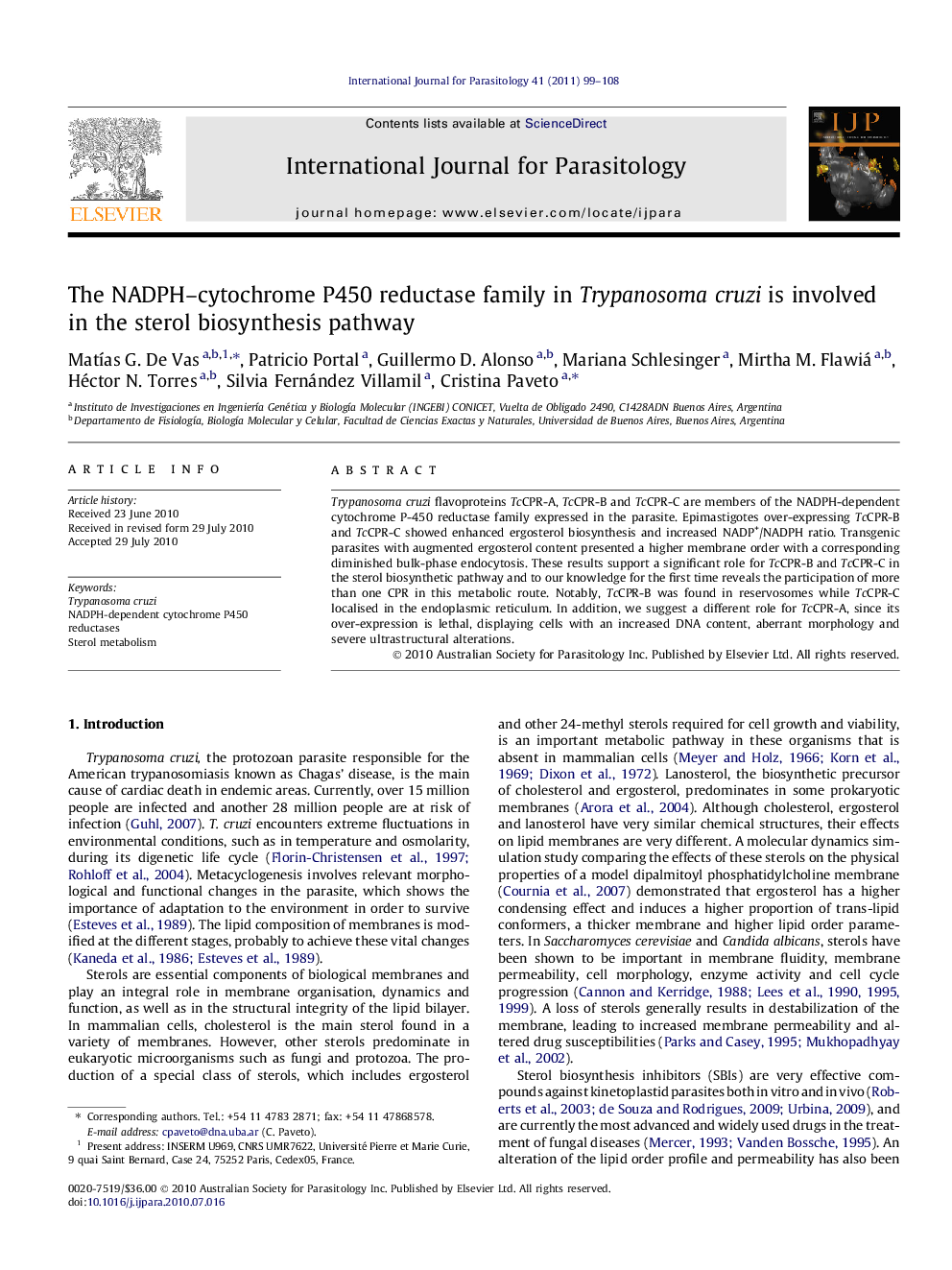| Article ID | Journal | Published Year | Pages | File Type |
|---|---|---|---|---|
| 2436283 | International Journal for Parasitology | 2011 | 10 Pages |
Trypanosoma cruzi flavoproteins TcCPR-A, TcCPR-B and TcCPR-C are members of the NADPH-dependent cytochrome P-450 reductase family expressed in the parasite. Epimastigotes over-expressing TcCPR-B and TcCPR-C showed enhanced ergosterol biosynthesis and increased NADP+/NADPH ratio. Transgenic parasites with augmented ergosterol content presented a higher membrane order with a corresponding diminished bulk-phase endocytosis. These results support a significant role for TcCPR-B and TcCPR-C in the sterol biosynthetic pathway and to our knowledge for the first time reveals the participation of more than one CPR in this metabolic route. Notably, TcCPR-B was found in reservosomes while TcCPR-C localised in the endoplasmic reticulum. In addition, we suggest a different role for TcCPR-A, since its over-expression is lethal, displaying cells with an increased DNA content, aberrant morphology and severe ultrastructural alterations.
Graphical abstractFigure optionsDownload full-size imageDownload high-quality image (72 K)Download as PowerPoint slideResearch highlights► Trypanosoma cruzi cytochrome P-450 reductase (TcCPR)-A over-expression induces cell death. ► TcCPR-B and TcCPR-C over-expression enhance ergosterol synthesis. ► Augmented ergosterol content modifies membrane fluidity of epimastigotes cells.
